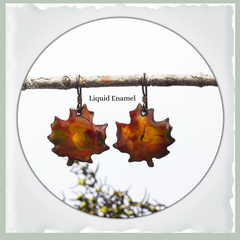
What IS Vitreous Enamel?!
Share

Vitreous glass is smooth, hard, chemically resistant, durable, scratch resistant, has long-lasting color fastness, and is easy to clean. Enamel is glass, not paint, so it does not fade under ultraviolet light.
To make vitreous enamels, the raw materials of silica sand, feldspar, borax, soda ash, and sodium fluoride are combined in a crucible. They are then melted in a furnace between 2192°F and 2462°F until all of the raw materials have liquified and mixed together. The glass is referred to as frit at this stage.
The mixture is then poured onto a steel slab to cool then quenched in cool water. It is then ground idownr using a ball mill. To add color to the enamel metal a variety of metal oxides are added. The enamel is referred to as frit at this stage. The frit is then ground to the appropriate mesh size for sifting.

Vitreous enameling is a process whereby this finely ground glass is fused to metal using high heat, the temperatures ranging from 1250°F to 1450°F. While some enamels contain lead for more brilliant colors, I choose to use only unleaded enamels in my work due to the health hazards.
Enamel powders can be mixed, but not in the same way that paints are. For instance, when blue and red enamel powder is used, the result is not purple, but rather individual grains of blue and red enamel. The exception is a specially formulated liquid enamel which can be mixed much like watercolor. Don’t confuse this with enamel paint, the enamel still has to be fired at the above temps for fusion to take place.

The process of making enameled jewelry:
- Cut, shape, file, sand, and clean the metal. Enamel will not adhere properly if there is any oil residue on the metal. In the case of earrings, drill holes to accommodate ear wires; or solder on ear posts.
- Fire 2 or more coats of sifted enamel powder to the back of the piece. When the piece is fired, the metal and the glass cool at different temperatures and rates. If the piece is not enameled on both sides, the risk of cracking greatly increases.
- In the case of copper, clean the top surface of all oxidation that may have occurred from the result of the firing process.
- Fire 2 or more coats of sifted enamel on the front. Allow to cool before grinding/sanding/cleaning excess glass from piece.
My experience has been a much more even distribution of the enamel as it flows when fired in the kiln. A torch can certainly be used and is a much more economical technique as kilns can be quite expensive. Great care needs to be taken not to over fire the piece.
